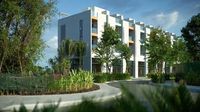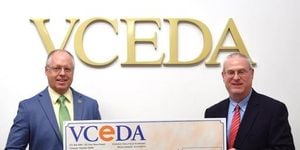In Vietnam’s rapidly evolving real estate and investment landscape, September 12, 2025, brought together a swirl of new trends, shifting priorities, and bold innovations. From the high-tech comforts of smart homes to the intricate world of personalized investment consulting, Vietnamese consumers and investors are changing the rules of the game—sometimes faster than the market can keep up. What’s fueling this transformation? A closer look at the latest developments reveals a confluence of lifestyle shifts, technological advances, and a growing appetite for transparency and sustainability.
According to a recent report by Bao Can Tho, the demand for rapid, clear, and transparent investment and settlement services is surging, with platforms like Cyvina.com stepping up to meet this need. Consumers are no longer satisfied with vague promises or murky procedures. They expect clarity at every step, whether they’re seeking residency solutions or shopping for their next high-end household upgrade. The article spotlights the top five models of smart toilets now available at competitive prices for Vietnamese families—a sign that the appetite for innovation isn’t limited to the boardroom but extends right into the bathroom.
But smart toilets are just the tip of the iceberg. The same source highlights an array of modern home solutions: ventilation fans connected to ducts for fresh air and odor extraction, ensuring effective air circulation for all types of buildings. There’s even a nod to the uniquely Vietnamese experience of Tonkin Egg Coffee, a reminder that tradition and innovation often blend seamlessly in daily life.
Yet, as flashy as these upgrades may be, the heart of Vietnam’s housing market is experiencing a deeper shift. As reported by Nhan Dan, the traditional mantra of “location, location, location” is being redefined. For years, proximity to city centers—close to administrative, educational, and economic infrastructure—was the gold standard for both homeowners and investors. Today, that definition is expanding. The relentless pressures of urban pollution, congestion, and the aftermath of the pandemic have nudged buyers, especially the middle class and younger generations, toward prioritizing the quality of their living environment over mere geographic centrality.
This shift is backed by hard data. A Batdongsan.com.vn survey conducted at the end of 2024 found that a whopping 86% of respondents cared about buying a green home, and 88% were willing to pay extra for it. The implications are profound: developers and investors are now racing to create projects that feature synchronous planning, low building density, green spaces, and designs that harmonize with nature. These features aren’t just marketing fluff—they’re becoming the main criteria for a growing segment of the market that values physical and mental well-being, community, and sustainability.
“The definition of a ‘good location’ is changing,” the Nhan Dan article notes. Instead of insisting on being at the city’s heart, buyers are looking for places with strong connectivity—think metro lines, expressways, and access to parks, lakes, schools, and public spaces. A development 10 to 20 kilometers outside the city center, but well-connected and surrounded by greenery, is often more attractive than a cramped, polluted, and traffic-choked apartment downtown. It’s a shift that’s as much about lifestyle philosophy as it is about practical convenience.
The impact of these preferences is visible in property values. The Vietnam Association of Real Estate Brokers (VARS) reports that projects with low building density and ample green space command resale prices 5-10% higher than similar developments with poorer environmental conditions. Properties near rivers, lakes, or parks, or those offering a full ecological system, not only hold their value better during market downturns but also recover more quickly when conditions improve. In short, the market is rewarding those who invest in quality of life—and punishing those who don’t.
Of course, the quest for quality and transparency isn’t limited to real estate. The world of investment consulting is undergoing its own revolution. As detailed in a Thanh Nien Viet interview, concepts like a minimum Net Asset Value (NAV) of 50 billion VND (about 2 million USD), fixed fees, and transaction fees based on NAV are capturing the attention of wealthy investors. Mr. Bui Duc Duy, Head of Investment Consulting at FPTS, explained why his firm chose this threshold: “With a net asset value close to 2 million USD, wealthy clients often have different investment goals, prioritizing stability in asset growth and focusing on risk management to preserve capital.”
FPTS’s approach is to provide deeply personalized advice, building professional consulting processes around individualized investment policy statements (IPS) for each client. Unlike traditional models that charge based on transaction volume (which can encourage unnecessary trading), FPTS charges a fixed fee of 0.04% per month on the average NAV above 50 billion VND. This, Mr. Duy argues, “eliminates conflicts of interest between the advisor’s income and the client’s investment performance.” Instead, advisors are incentivized to focus on long-term strategies that truly serve client needs, not just short-term profits.
What sets FPTS apart, according to Mr. Duy, is the combination of personalized service and the expertise of its advisory team. Each advisor must undergo a rigorous 12-month training program, covering everything from portfolio management to behavioral finance and communication skills. Only after earning an internal investment consulting certificate are they allowed to work directly with clients. “The effectiveness of our consulting is evaluated based on the client’s NAV growth, excluding market fluctuations outside of stock transactions,” Duy explained. This ensures that the quality of service is tightly controlled and that clients receive objective, high-quality advice.
Transparency and accountability are woven into the process. FPTS maintains an oversight structure where senior management is always available to listen to client feedback and address concerns. “We are fully confident,” Mr. Duy stated, “With nearly 20 years of experience, technological advantages, and a highly skilled team, FPTS is ready to accompany large NAV investors on a journey to create sustainable value.” The fixed-fee advisory service, he added, isn’t just a promise of transparency and objectivity—it’s a long-term vision that puts people and technology at the core, always prioritizing client interests.
Meanwhile, Vietnam’s broader economic and policy environment is also adapting to these new realities. Bao Can Tho reports that the Prime Minister has requested detailed reports on the currency, gold, and stock markets, and has issued directives on fiscal and monetary policy management. There’s also news of a pilot digital asset market launched on September 9, 2025—yet another sign that Vietnam is embracing innovation, albeit cautiously, as it seeks to balance growth with stability.
Other sectors are not standing still. The domestic automobile industry is receiving practical support, rural development projects are focusing on sustainability, and local authorities are working to ensure stable electricity supplies during the stormy season. Even the world of education is adapting, with Can Tho Social Policy Bank’s director, Mr. Lang Chanh Hue Thao, assuring that loan needs for STEM students will be met—a nod to the future workforce driving these changes.
From smart homes and green living to personalized investment strategies and transparent, tech-driven markets, Vietnam in 2025 is a country on the move. The lines between tradition and modernity, local and global, are blurring—and for those willing to adapt, the opportunities are as vast as the challenges.





